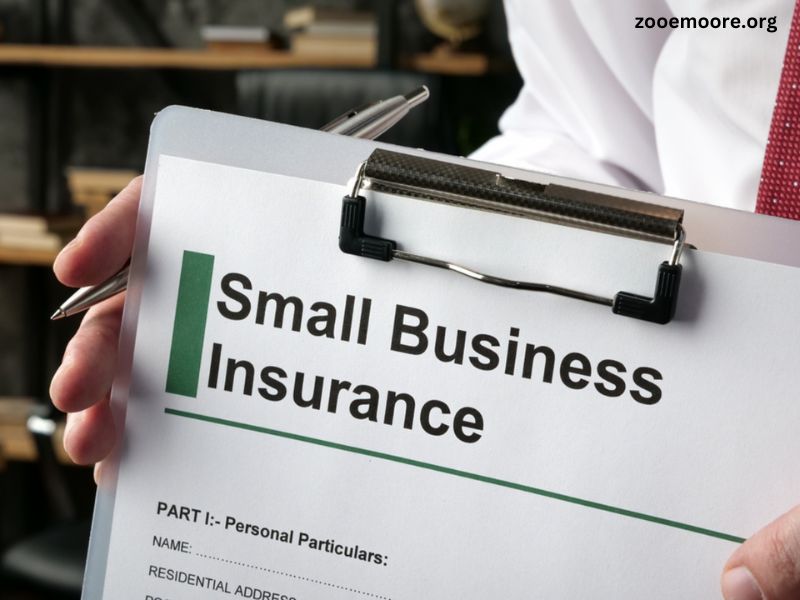Business insurance is an essential aspect of protecting a company from various risks that can disrupt operations or even threaten its existence. Whether you’re running a small startup or managing a large corporation, understanding the cost of business insurance is crucial for effective financial planning. The cost of business insurance varies widely depending on several factors, including the type of business, the industry, location, the coverage needed, and the insurer’s risk assessment. This article provides an in-depth look at the different types of business insurance, the factors influencing their costs, and how businesses can manage these expenses.
Types of Business Insurance
There are several types of business insurance, each designed to protect different aspects of a business. The most common types include:
- General Liability Insurance: This is one of the most basic types of business insurance and is essential for almost every business. It covers legal fees and damages if your business is sued for causing bodily injury or property damage to a third party.
- Property Insurance: Property insurance covers damage to your business property, such as buildings, equipment, and inventory, due to events like fire, theft, or natural disasters.
- Business Interruption Insurance: This type of insurance compensates for lost income if your business operations are interrupted due to a covered event like a fire or natural disaster.
- Workers’ Compensation Insurance: Workers’ compensation insurance is mandatory in most states for businesses with employees. It covers medical expenses and lost wages for employees who are injured or become ill due to their job.
- Professional Liability Insurance: Also known as Errors and Omissions (E&O) insurance, this policy covers claims arising from professional mistakes, negligence, or failure to deliver services as promised.
- Commercial Auto Insurance: If your business uses vehicles for operations, commercial auto insurance is necessary. It covers damages resulting from accidents involving company vehicles.
- Cyber Liability Insurance: With the rise of cyber threats, cyber liability insurance has become increasingly important. It covers losses resulting from data breaches, hacking, and other cyber-related incidents.
- Product Liability Insurance: If your business manufactures or sells products, product liability insurance protects against claims of injury or damage caused by your products.
- Directors and Officers (D&O) Insurance: This insurance protects the personal assets of your company’s directors and officers if they are sued for decisions made on behalf of the company.
Factors Influencing Business Insurance Costs
The cost of business insurance is influenced by several factors, each contributing to the overall premium you pay. Understanding these factors can help you estimate your insurance costs more accurately.
1. Type of Business and Industry
The nature of your business and the industry you operate in significantly impact the cost of your insurance. For example, a construction company may pay more for general liability insurance than a consulting firm due to the higher risk of accidents and injuries on construction sites. Similarly, a business in a high-risk industry like manufacturing may have higher premiums for property insurance due to the greater likelihood of property damage.
2. Location
Where your business is located also plays a crucial role in determining insurance costs. Businesses in areas prone to natural disasters, such as floods, earthquakes, or hurricanes, may face higher property insurance premiums. Additionally, urban locations with higher crime rates may result in higher premiums for theft-related coverage.
3. Business Size and Revenue
The size of your business, measured in terms of revenue and the number of employees, affects the cost of various types of insurance. Larger businesses typically have higher premiums because they present a greater risk to insurers. For example, a company with many employees will pay more for workers’ compensation insurance than a smaller business.
4. Coverage Amount and Policy Limits
The amount of coverage you need and the policy limits you choose directly impact your insurance costs. Higher coverage limits mean more protection, but they also come with higher premiums. Businesses that opt for lower deductibles (the amount you pay out of pocket before insurance kicks in) will also face higher premiums.
5. Claims History
Your business’s claims history is a critical factor in determining your insurance premiums. If your company has a history of frequent claims or large payouts, insurers may view you as a higher risk, leading to higher premiums. Conversely, a clean claims history can result in lower premiums.
6. Risk Management Practices
Implementing effective risk management practices can lower your insurance costs. Insurers may offer discounts to businesses that take proactive steps to reduce risks, such as installing security systems, conducting regular safety training, or implementing cybersecurity measures.
7. Experience and Expertise
The experience and expertise of your business’s management team can also influence insurance costs. Insurers may offer lower premiums to businesses with experienced leaders who have a track record of successfully managing risks.
Average Costs of Business Insurance
While the cost of business insurance can vary widely depending on the factors mentioned above, it’s helpful to have a general idea of what you might expect to pay. Below are average annual costs for some of the most common types of business insurance:
- General Liability Insurance: The average cost of general liability insurance ranges from $400 to $1,500 per year for small businesses. However, businesses in higher-risk industries may pay more.
- Property Insurance: Small businesses typically pay between $500 and $2,000 per year for property insurance. Costs can be higher for businesses with valuable property or those located in high-risk areas.
- Business Interruption Insurance: This coverage is often bundled with property insurance. The additional cost for business interruption coverage usually ranges from $500 to $1,500 per year.
- Workers’ Compensation Insurance: The cost of workers’ compensation insurance varies widely by state and industry. On average, businesses can expect to pay $0.75 to $2.74 per $100 of payroll.
- Professional Liability Insurance: The cost of professional liability insurance typically ranges from $500 to $3,000 per year, depending on the industry and the level of risk involved.
- Commercial Auto Insurance: The cost of commercial auto insurance varies depending on factors like the number of vehicles and their use. On average, premiums range from $750 to $2,000 per vehicle per year.
- Cyber Liability Insurance: The cost of cyber liability insurance has been rising due to increasing cyber threats. Small businesses can expect to pay between $1,000 and $7,500 per year, depending on their risk profile.
- Product Liability Insurance: The cost of product liability insurance varies widely based on the type of product and its risk level. Premiums can range from $500 to $5,000 per year for small businesses.
- Directors and Officers (D&O) Insurance: The cost of D&O insurance typically ranges from $1,000 to $10,000 per year, depending on the size and risk profile of the business.
How to Reduce Business Insurance Costs
While business insurance is a necessary expense, there are several strategies businesses can use to manage and reduce these costs:
1. Shop Around for Quotes
One of the most effective ways to reduce insurance costs is to shop around and compare quotes from multiple insurers. Each insurer assesses risk differently, so you may find significant differences in premiums for the same coverage.
2. Bundle Policies
Many insurers offer discounts for bundling multiple types of coverage, such as general liability, property, and business interruption insurance, into a single policy. This approach, often called a Business Owner’s Policy (BOP), can be more cost-effective than purchasing separate policies.
3. Increase Deductibles
Choosing a higher deductible can lower your insurance premiums. However, make sure your business can afford to pay the deductible out of pocket in the event of a claim.
4. Implement Risk Management Practices
As mentioned earlier, effective risk management practices can lead to lower insurance premiums. Consider investing in safety training, security systems, and cybersecurity measures to reduce your risk and qualify for discounts.
5. Review Coverage Regularly
Regularly reviewing your insurance coverage ensures that you are not over-insured or under-insured. As your business evolves, your insurance needs may change, so it’s essential to adjust your coverage accordingly.
6. Work with an Insurance Broker
An insurance broker can help you navigate the complexities of business insurance and find the best coverage at the most competitive rates. Brokers have access to multiple insurers and can negotiate on your behalf.
7. Focus on Preventive Measures
Preventive measures, such as regular maintenance of equipment, proper employee training, and adhering to safety regulations, can reduce the likelihood of claims. Insurers may offer lower premiums to businesses that demonstrate a commitment to prevention.
Conclusion
The cost of business insurance is a vital consideration for any business owner. While premiums can vary widely based on factors such as the type of business, location, and coverage needs, it’s possible to manage these costs effectively. By understanding the factors that influence insurance costs, shopping around for the best rates, and implementing risk management practices, businesses can secure the necessary protection without overburdening their finances.
Investing in business insurance is an investment in the future stability and success of your company. While it may seem like a significant expense, the protection it offers against unforeseen events is invaluable. Whether you’re a small business owner or managing a large enterprise, taking the time to assess your insurance needs and explore cost-saving strategies can help ensure your business remains protected and profitable in the long run.



